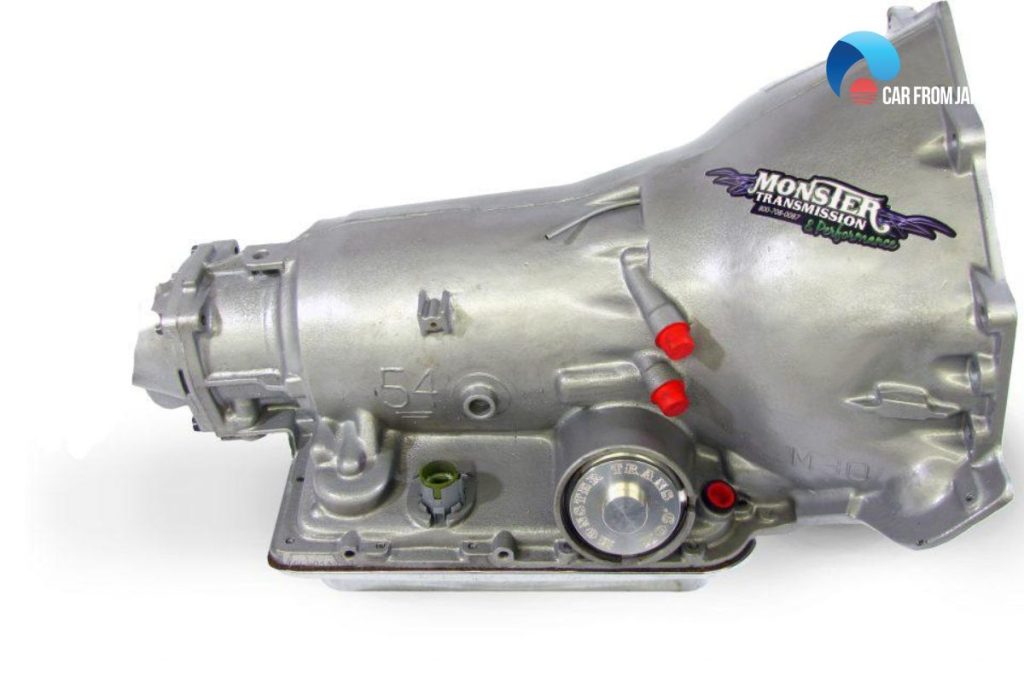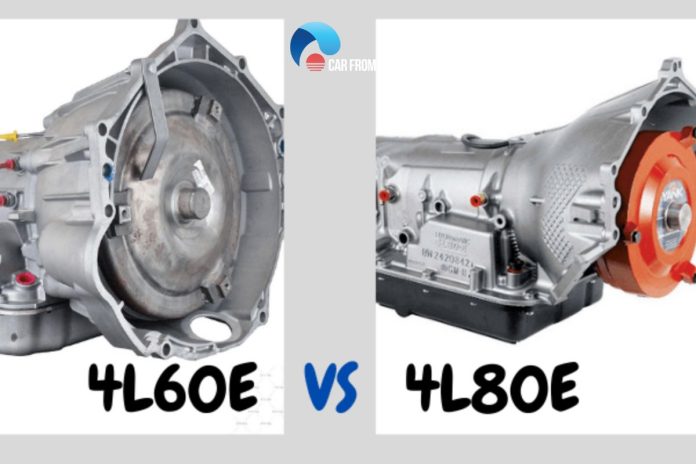Although both the 4L60e and 4L80e are automotive transmissions designed by General Motors, there is still a ton of difference between the two.
The 4L60e is the standard transmission found in rear-wheel vehicles, but the 4L80e found in diesel and big cars.
Regarding the difference between 4l60e vs 4l80e, they differ based on origin, pricing, appearance, and performance. More likely, the 4l80e might be a bit better of the two transmissions.
Contents
What Are The Difference Between 4l60e and 4l80e?
Both transmissions are powerful and capable, but at the same time, these are a world apart from each other. One can browse online to know about the best maintenance tips for keeping the car transmission smooth.
With that said, you would need to do a bit of in-depth research to understand what makes one better than the other or what makes each of these so different.
Origin
Despite having similar model numbers, there is a vast difference between 4l60e and 4l80e on how each of these made.
On the one hand, the 4l80e is an electronic overdrive successor to the Turbo 400, which is an earlier transmission model preferred by drag racers and hot rod fans.
The 4l60e based on the 700-R4, which has been the standard transmission for both Chevrolet and General Motors vehicles during 1982.
Read More: Know Here the Different Types of Car Transmissions and Functions
Size and Weight
A considerable difference between 4l60e and 4l80e is the size and weight of both these transmissions.
On the one hand, the 4l80e is larger and heavier than 4l60e. Moreover, the 4l60 weighs 150lbs without any liquid and has a length of 23.5. On the other hand, the 4l80e weighs 236lbs with a range of 26.4.
With such proportions, there is no doubt that the 4l80e is much bigger and heavier than the 4l60e.
Gear Ratios
Another significant difference between 4l60e and 4l80e is the gear ratio. For example, during the first gear, the 4l60e has a gear ratio of 3.059:1, whereas the 4l80e has a gear ratio of 2.48:1.
Moreover, you need to keep in mind this difference, especially when swapping one transmission for another.
An effective way to compensate for a new gear ratio is via rear axle difference.
Pan & Pan Gasket
In case you are searching for the transmission fluid pan under the transmission, there is a big difference between these two transmissions. Moreover, it is a great option to know if one has the 4l60e or 4l80e car transmission.
Also, the 4l60e contains a rectangular pan & gasket of 16 bolts. However, the 4l80e comes with an oval-shaped transmission pan with 16 bolts gasket.

Wiring Harness, Controller & Sensors
When it comes to the electronics found inside both of these transmissions, there is a considerable difference. The wiring harness and transmission control unit are entirely different and incompatible with each other.
There is a considerable difference between the sensors, with the 4l80e having a 2-speed sensor, which is entirely different from that found on the 4l60e.
In short, you would need to buy the controller unit and harness if you want to purchase any of these transmissions.
Maximum Torque
Apart from the size of both transmissions, there is also a considerable difference between the durability, especially when it comes to performance.
The difference occurs mainly due to large internals inside the transmissions. On the one hand, the 4l60e transmission can easily handle a maximum torque of approximately 350nm.
On the other hand, the 4l80e can handle 450nm and above of torque. However, there is a vast difference between these two.
At the same time, you should understand that there will be considerable differences in the performance of a transmission, which is three decades old and a new one.
Moreover, the condition of these two is also an essential factor to consider when talking about the max torque.
Pricing
Since the 4l60e is more common than the 4l80e, there will be an inevitable difference in the pricing of both these transmissions.
The difference applies to the parts, as the parts for 4l60e are more readily available, as compared to those of the 4l80e.
Moreover, if you are looking for parts, we recommend checking it online. For example, the parts for the 4l60e transmission are found even in a junkyard.

What Is A 4l60 To 4l80 Conversion?
After skimming through the difference of the two transmissions, dig deeper into the meaning and characteristics of the switching task between them.
The 4L80E transmission is a popular swap for the 4L60E primarily due to its significantly higher torque capacity and durability.
This makes it a desirable upgrade for vehicles with modified or high-output engines, those used for heavy towing, or those subjected to harsh off-road conditions where the 4L60E might be prone to failure.
The 4L80E’s robust construction can handle significantly more power and abuse, providing increased reliability and peace of mind.
However, there are several key challenges. Swapping a 4L60E for a 4L80E is a complex project so you should be aware of these criteria:
- Physical size and weight: The 4L80E is considerably larger and heavier. This can affect weight distribution and may require modifications to the transmission tunnel or floor pan.
- Mounting points: The mounting points are different, necessitating a new transmission crossmember or modifications to the existing one.
- Driveshaft length: The overall length difference usually requires a custom or shortened driveshaft.
- Torque converter: You’ll need a torque converter specifically designed for the 4L80E and compatible with your engine.
- Transmission controller: The 4L80E requires a different control system. Options include standalone controllers, adapting the existing vehicle’s computer (often requiring extensive tuning), or using a transmission control module (TCM) from a vehicle originally equipped with a 4L80E.
- Wiring harness: Extensive wiring modifications are necessary to connect the transmission controller to the engine and other vehicle systems.
- Shift linkage: Required
- Cooler lines: Need to be rerouted or replaced.
- Yoke: The output yoke (the part that connects to the driveshaft) is different and will need to be changed.
As you can see, the whole project requires substantial mechanical knowledge, fabrication skills, and specialized tools that need to be prepared in advance with carefulness!
Check out this video from Tahoe Steve to learn more about the 4l60e to 4l80e swap wiring and what to buy!
FAQs on 4l60e and 4l80e
Are the 4L60E and 4L80E interchangeable without modifications?
Not at all. Even though they share some design philosophy, they differ in size, wiring, driveshaft length, output shaft spline count, and even PCM programming.
Swapping one for the other requires extensive modifications.
Why do people say the 4L60E is better for lighter vehicles?
The 4L60E is physically smaller and lighter than the 4L80E. So it is a more suitable fit for light-duty trucks, SUVs, and passenger cars where performance, not just strength, matters.
Do both transmissions support the same torque capacity?
No. The 4L80E can handle roughly 450–500 lb-ft of torque in stock form, while the 4L60E is rated closer to 350 lb-ft.
That’s why the 4L80E is often used behind big blocks or diesel engines.
Why does the 4L80E have a reputation for running cooler than the 4L60E?
Because of its heavy-duty internals and design, the 4L80E typically handles heat dissipation better under load. However, both benefit greatly from external transmission coolers.
Are there tuning differences between the two?
Yes! Each transmission requires different tuning parameters in the PCM.
The shift points, line pressure control, and torque converter lock-up settings are unique to each.
Endnote
Although each of the transmissions does offer specific benefits to the car owner, when it comes to the difference between 4l60e and 4l80e, there is a lot to know.
However, this difference is what will help a fellow car driver to choose the best transmission.
For more insightful Car knowledge pieces, follow Car From Japan today!



